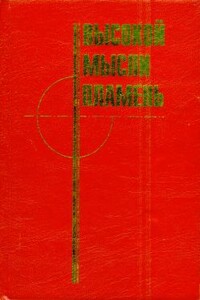Indeed, the heart of the defense strategy featured an effort at public storytelling, the creation of a counternarrative based on the idea of a police conspiracy to frame Simpson. For this effort, the defense needed a receptive audience, which it most definitely had in the African-Americans who dominated the jury pool in downtown Los Angeles. The defense strategy played to experiences that were anything but fictional-above all, the decades of racism in and by the Los Angeles Police Department. The defense sought to identify the Simpson case as the latest in a series of racial abuses by the LAPD, which featured such celebrated outrages as the Rodney King case and thousands of other insults and affronts great and small. This legacy of black distrust of the LAPD was the fertile soil in which the Simpson defense strategy grew. As the events of the case unfolded, the LAPD more than lived up to its reputation as one of the worst big-city police departments in the United States, one that tolerated sloth, incompetence, and racism. As it happened, though, bad as the LAPD was, it did not frame O.J. Simpson; no one planted or fabricated any evidence. In fact, the defense cleverly obscured the one actual police conspiracy that was revealed over the course of the case-that of the starstruck cops who in 1989 tried to minimize and excuse O.J. Simpson’s history of domestic violence.
It is ultimately unknowable whether a brilliant effort by prosecutors in the Simpson case could have produced a conviction in spite of the defense effort to make the case a racial referendum. There was, alas, no such splendid performance. Indeed, despite the best intentions, the case was largely botched by the Los Angeles District Attorney’s Office. The prosecutors were undone by the twin afflictions most common among government lawyers: arrogance (mostly Marcia Clark’s) and ineptitude (largely Christopher Darden’s). Drunk on virtue, the prosecutors squandered what little chance they had for victory.
At its core, the Simpson case was a horrific yet routine domestic-violence homicide. It metastasized into a national drama, one that exposed deep fissures in American society, for one reason: because the defendant’s lawyers thought that using race would help their client win an acquittal. It did. That was all that mattered to them. More than a decade ago, Alan Dershowitz, one of Simpson’s lawyers, gave a candid précis of the approach that would characterize the defense team’s efforts. In his book The Best Defense, Dershowitz wrote, “Once I decide to take a case, I have only one agenda: I want to win. I will try, by every fair and legal means, to get my client off-without regard to the consequences.”
The geographic spine of Brentwood-indeed, the spine of wealthy West Los Angeles-is Sunset Boulevard. The legendary thoroughfare begins modestly, just a few blocks from the Los Angeles Criminal Courts Building, in the city’s forlorn downtown, where it begins its twenty-mile trek west to the Pacific Ocean. From downtown, it passes through the honky-tonk precincts of Hollywood and then moves ever upscale, through Beverly Hills and then to Bel-Air. When Sunset then crosses the San Diego Freeway, the air clears-literally. The next community is Brentwood, where ocean breezes scrub the pervasive smog from the sky. Here, in its last stop before the ocean, Sunset Boulevard shimmies along the base of the foothills that lead up to the Santa Monica Mountains. When planners first laid out Brentwood in the 1920s, their model was Golden Gate Park in San Francisco. The little roads that sprout from Sunset still follow the curves of the hills. Big houses have always been the rule in Brentwood, in the usual stylistic mix for wealthy Los Angeles: Normandy farmhouse; English Tudor; English Cotswold cottage; Spanish Colonial Revival. In one respect, the houses in Brentwood differ from their wealthy cousins in the Hollywood Hills or Beverly Hills. It is a less showy neighborhood, with fewer modernist architectural gestures and rococo European follies-a conservative place.


